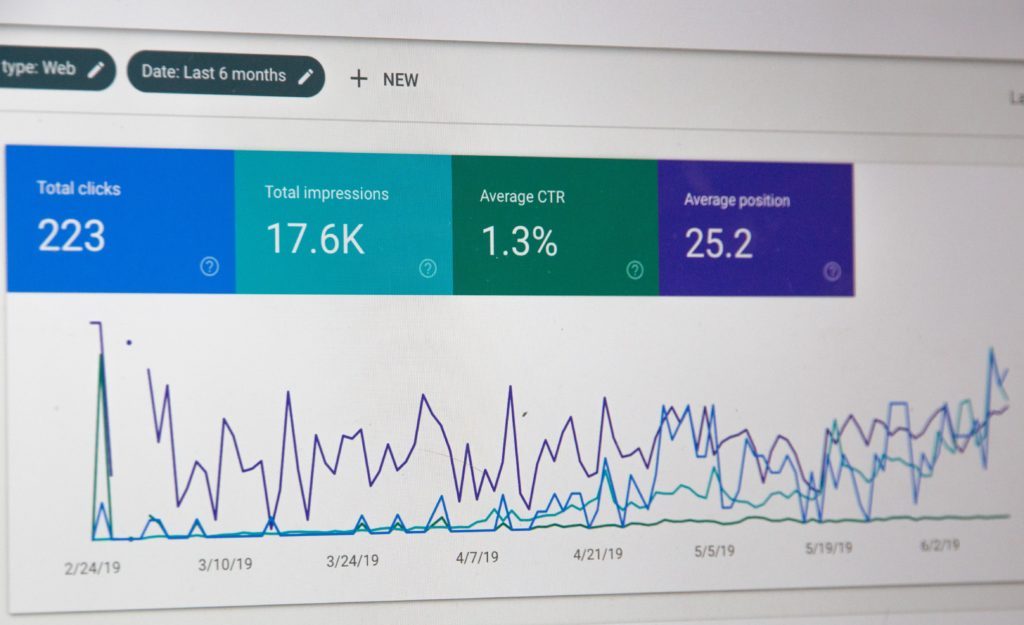Three Tips to Improve Your SEO
A blog is an invaluable addition to any company website. To illustrate, businesses that blog attract an average of 67% more monthly leads compared to companies without a blog. What’s more, blogging companies count 55% more website visitors than companies that don’t.
One of the benefits of a company blog is improving SEO, as search engines will get more content to index. However, you cannot just publish blog content once in a while and hope for the best. For maximum SEO ROI, businesses need to publish consistently and optimize blog posts to outrank their competitors on search engine results. Here are three in-depth tips to improve your SEO.

What Is SEO?
Search engine optimization relates to the practice of optimizing blog content to rank highly in search engines like Google, Bing, and Yahoo. The web is incredibly massive, with more than 1.7 billion websites and over 4 billion people participating in online interactions. Thus, search engines need to rank websites to display the most relevant results every time someone performs an online search.
There are several types of SEO, namely:
1. On-Page SEO
On-page or on-site SEO includes all the content visitors see on your website, such as blogs, web copy, or product copy. Specifically, on-page SEO describes the strategies you use to boost your ranking when curating content for your site, including keywords, meta descriptions, headers, and title tags.
2. Off-Page SEO
Off-page SEO involves the strategies you pursue outside of your website, which help your SEO ranking, like backlinks.
3. Local SEO
Local SEO efforts relate to a specific region. Search engines look for factors like relevance and proximity to rank local businesses.
4. Technical SEO
Technical SEO relates to the technical strategies that boost SEO rankings. For instance, you can speed up loading times to encourage visitors to stay on your blog.
Why Is SEO Important?

Google’s front page receives 95% of all web traffic. Hence, your website has little visibility if it doesn’t appear on the first page of Google. The fewer visitors you attract, the fewer conversions you get. In contrast, the higher your website rank on search engine result pages, the easier it is for people to find you serving as an additional marketing tool.
People look to search engines for credibility, which explains why paid search results are less popular. So, a high rank lets a guest know they can trust you and your products. By focusing on organic growth through relevant keywords and other tactics, you attract more clicks and traffic to your site.
How to Improve your SEO
Search engine optimization is most effective as an ongoing strategy rather than something you focus on infrequently. Fortunately, there are many SEO opportunities to boost your ranking. Here are three tips to improve your SEO that should be your first priority:
1. Add High-Quality Backlinks to Improve SEO
Although Google makes regular updates to its ranking algorithms, quality backlinks are still one of the best ways to boost blog SEO. However, some backlinks are worth more than others. Specifically, pursue backlinks from authority sites that boost your blog’s domain authority. Some strategies to use are:
- Create High-Quality Content
By linking to your blog, a referring site risks its credibility. Essentially, no site wants to direct its readers to boring and irrelevant content. Original research is one type of content that attracts high-quality backlinks. For example, if you blog about fashion, analyze the popular trends to attract links from numerous fashion bloggers. Another tactic is to create in-depth resources that include checklists, comprehensive guides, and glossaries.
- Publish Guest Posts on Authority Sites
Guest blogging is a superb way to reach new audiences and increase your social media followers. First, identify authority sites to build relationships with. Most audience-rich sites accept high-quality posts, and you can write about any popular topic in the niche. Then, write several guest posts for a particular site to build credibility.
- Identify Broken Links
Looking for broken links on popular sites is another popular strategy to acquire quality backlinks. Utilize a tool like Check My Link to detect broken links in sites related to your niche. If a broken link is to blog content like yours, report it in an email to the publisher and suggest a link to your website.
2. Optimize Your Blog Content for SEO to Improve SEO

It is not enough to write blog posts that interest your audience. Instead, create content with SEO in mind by considering what search engines are after. Some of the tactics to include in your SEO strategy include:
- Use Long-Tail Keywords
Keyword research is the most vital step when creating business blog posts. Essentially, the goal of keyword analysis is to identify the topics that concern your audience the most. SEO experts recommend using long-tail keywords, that is, phrases with three to five words, to target a niche demographic.
For example, if your website sells running sneakers, you can target ‘running sneakers online’ or ‘cheap running sneakers’ instead of just ‘running sneakers. In this way, you attract searchers who are ready to make purchases and enjoy increased conversion rates. Tools like Google search console and Google Analytics provide valuable insights for long-tail keyword research.
- Place Keyword Variations in the Alt Tags of Blog Images
Although search engines love blog posts with images and other multimedia, they cannot interpret images. Alt tags influence how Google ranks a webpage’s content by describing images. Moreover, the tags provide web accessibility for people who use screen readers or text-only browsers. Thus, provide descriptive alt tags and include related keywords to boost your blog’s SEO ranking.
- Add Keywords to Meta Descriptions
Meta descriptions are snippets that describe a webpage’s content in about 155 characters. The meta description appears under a website’s URL and page title on a search engine results page (SERP). Meta descriptions influence the click-through rate (CTR), which is why you should make them relevant and descriptive. By adding the keywords that your target audience uses in the meta descriptions, you attract more traffic.
- Optimize for Featured Snippets
A featured snippet provides quick answers for a search query and appears at the top of a SERP. Typically, these snippets appear as short how-to guides, numbered lists, or question-answer formats. Featured snippets attract organic traffic and boost a blog’s authority.
3. Enhance the User Experience to Improve SEO

Search engines are increasingly looking for user experience (UX) as they crawl websites. So, improve your blog’s accessibility and usability. For instance, most of your blog’s readers are likely using their mobile devices instead of a desktop to read your content. Therefore, optimize your site for smartphones.
First, the font size should be large enough to enhance readability on mobile phones. You don’t want your readers to keep zooming in to read your content. Second, use white space generously to make your blog look elegant and uncluttered. Also, ensure the mobile menu is vertical to help users navigate your site. Lastly, mobile pages should load quickly to keep users on your blog.
Using attractive calls to actions (CTA) is another tactic to enhance user experience. First, identify the action you want to optimize for. Feature a CTA button prominently on your blog page with action-oriented requests like ‘Get Started‘ or ‘Sign up Now.’
To Sum Up
While having a blog on your business website is good for SEO, you need to take further actions to boost your search ranking. Specifically, use long-tail keywords, add high-quality backlinks, and improve the user experience. These tips to improve your SEO also result in more traffic and higher conversion rates. Lastly, Google continually updates its algorithms, and you should monitor these changes to stay relevant.




